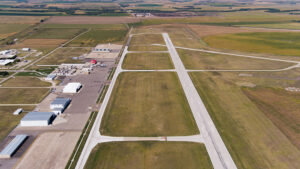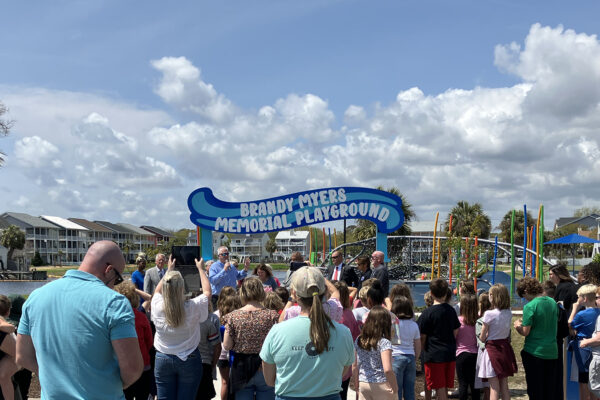ACEC-Nebraska Recognizes Benesch Projects at Engineering Excellence Awards

OMAHA, NE – At the recent American Council of Engineering Companies – Nebraska 2023 Engineering Excellence Awards, two Benesch projects were recognized: the Kearney Regional Airport, Taxiway ‘A’ & Connecting Taxiways Rehabilitation project and the Niobrara West Bridges Emergency Repair Mitigation Site project. Both projects received Merit awards and were featured in the Omaha World Herald.


Kearney Regional Airport
Though it had undergone typical maintenance over the last 30, the existing pavement on Parallel Taxiway ‘A’ and the connecting taxiways had reached the end of its service life and was in need of reconstruction to address safety concerns. After Benesch completed a preliminary study evaluating the existing airfield pavements to define the rehabilitation/reconstruction strategy and the estimated costs, it was discovered that pavement sections varied drastically throughout the length of Parallel Taxiway A and each of the connecting taxiways.
To speed up the reconstruction process and provide a cost-effective solution, a pavement design alternative of an unbonded white top was selected. Underdrains and storm sewer upgrades were also completed as a result of the profile changes to all pavement areas affected by the reconstruction. Benesch provided preliminary design, design and bidding and was also responsible for construction observation, material testing and closeout.
“With the pavement at the end of its service life, it was crucial that repairs were made to ensure uninterrupted air service could continue,” said Project Manager Andy Beil. “Our team was able to find an efficient and cost-effective solution that ensure the airport is meeting FAA regulations and has a long-term serviceable pavement.”


Niobrara West Bridges Emergency Repair Mitigation Site
After an impressive storm hit Nebraska in 2019 and resulted in record flooding, two bridges in Niobrara were impacted: the Highway 12 bridge over the Mormon Canal was completely swept away and the Highway 12 bridge over the Niobrara River was heavily damaged. Benesch, already working on a highway project in Niobrara for the Nebraska Department of Transportation (NDOT), was called upon for emergency response to design the replacement bridges and then later to assess and design solutions to offset environmental impacts for the repaired bridges and roadway.
“As a full service provider with highly qualified staff, our team was able to work with the different state and federal agencies to retroactively address aquatic resources, wildlife, and viewshed impacts associated with the temporary and permanent construction activities to restore transportation connectivity,” said Project Manager Jeff Sockel.
The result was the creation of a wetland mitigation site to compensate for multiple types of wetlands impacted and a recreational area providing public river access, education, a multi-use road, and an observation area to view the scenic Niobrara River corridor to compensate for impacts to threatened and endangered species, and the Missouri National Recreation River.
Wetland mitigation was challenging as it required a plan to mitigate both temporarily and permanently impacted emergent, shrub, and forested wetland types together on one site. In addition, the Nebraska Department of Transportation (NDOT) had to mitigate temporal losses to wetlands on this site. Federal and State-listed Threatened and Endangered Species and Missouri National Recreation River Outstanding Recreation Value (ORV) mitigation occurred on a second site on the opposite side of the river from the wetland mitigation site and included an observation deck on the Niobrara River with educational signs displaying cultural, historical, endangered species and ecology information.
In addition, a recreational and research component was added to include a canoe/kayak ramp to the Niobrara River, which required a channelized chute through a silted backwater area to allow canoes/kayaks access to the main river channel.
“The environmental strategy was developed in cooperation with the National Park Service, Nebraska Game and Parks, US Fish & Wildlife Service, and the US Army Corps of Engineers. This helped us ensure the plan met the requirements of all agencies,” said Group Manager Andy Miller who was permit lead for the project. “It added to the complexity of the project, but our team was able to create the wetland mitigation site.”


Members of both project teams celebrated their awards with Jeanne McClure, ACEC Nebraska’s Executive Director.










